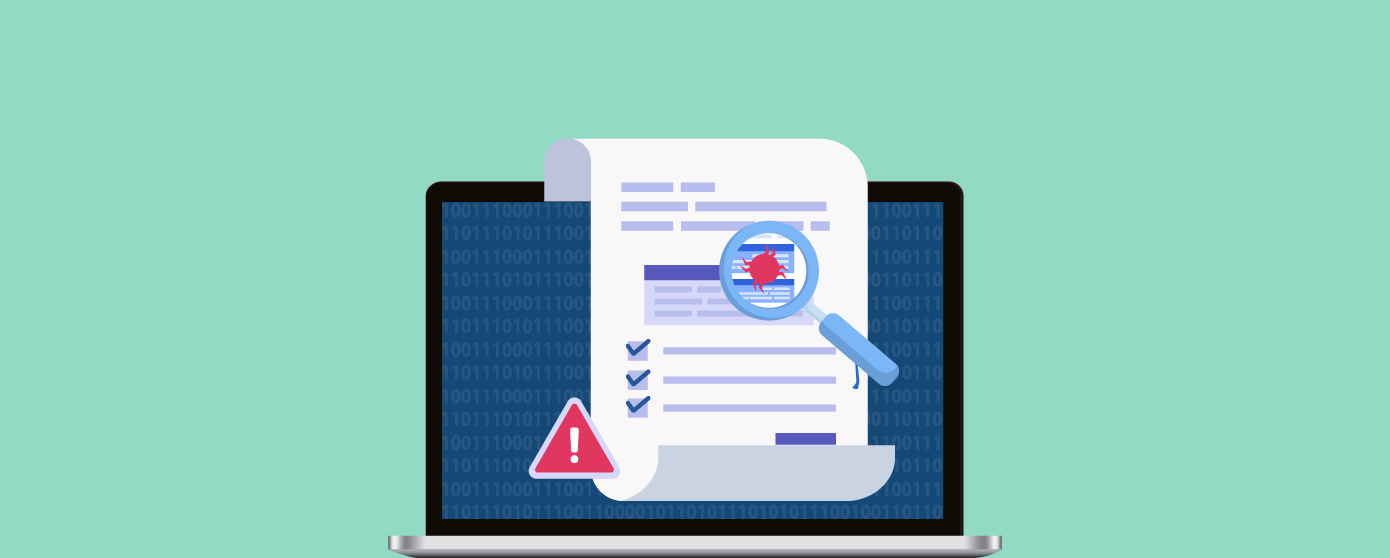Vulnerability Assessment: Types and Methodology
With vulnerability exploits surpassing phishing attacks by 34%, according to the 2025 Verizon DBIR, protecting your systems is more critical than ever. Vulnerability assessment is a key proactive step to uncover, analyze, and remediate security weaknesses before they become breaches.
In this blog, we’ll explore the core concepts of vulnerability assessment, outline the main types, and explain methodologies that organizations use to strengthen their defenses effectively.
What is a Vulnerability Assessment?
Vulnerability assessment is the process of identifying the threats or weaknesses in computer systems, networks, and software, along with the inherent risks they introduce.
Vulnerability assessments done by performing black box or grey box security testing simulate real-life scenarios of how hackers attack applications. After all every application is a black box from a hacker’s perspective and they just brute force various attack types using sophisticated scanners.
Types of Vulnerability Assessment
Vulnerability assessments can be classified into several types based on scope, technique, and automation level:
1. Network-Based Vulnerability Assessment
A network-based vulnerability assessment focuses on identifying weaknesses in your network infrastructure. This includes both internal and external-facing assets such as routers, firewalls, switches, servers, and other connected devices. The purpose of this assessment is to uncover vulnerabilities that could allow unauthorized access, lateral movement, or data exfiltration
Using specialized scanning tools, analysts probe for open ports, misconfigurations, unpatched services, and weak or outdated encryption protocols. These assessments also help detect rogue devices or exposed services that may not comply with your organization’s security policy.
For example, a company may discover through this assessment that its firewall has open ports unnecessarily exposed to the internet, or that legacy systems are still using vulnerable protocols such as Telnet or SMBv1. Fixing these issues helps reduce the organization’s attack surface significantly.
Network assessments are particularly important after major infrastructure changes, during mergers and acquisitions, or before launching new services to the public.
2. Host-Based Vulnerability Assessment
Unlike network-based scans that take a perimeter-wide view, host-based assessments drill down into the individual systems—servers, workstations, and endpoints—to analyze the state of installed software, local configurations, and operating system security.
These assessments often require an agent or credentialed access to collect detailed information about each machine. They help detect missing patches, weak user permissions, outdated drivers, and local application vulnerabilities that may not be visible from the network level.
Imagine a scenario where a developer workstation has administrative access enabled for multiple users, an outdated version of Java, and a misconfigured antivirus. A host-based assessment would highlight all of these risks and suggest corrective actions such as removing unnecessary privileges, updating software, and reconfiguring the antivirus for better protection.
This type of assessment is vital for internal security hardening and should be part of a continuous patch management and compliance verification process.
3. Application-Based Vulnerability Assessment
Web and mobile applications have become prime targets for attackers. Application-based vulnerability assessments focus on analyzing the security of software applications, particularly those accessible via the internet.
This type of assessment typically involves both automated scanners and manual testing to detect a range of vulnerabilities. Common issues include SQL injection, cross-site scripting (XSS), insecure authentication, broken access controls, and API misconfigurations—many of which are covered by the OWASP Top 10 list.
For example, a web application that accepts user input without proper validation could allow attackers to inject malicious SQL queries, leading to unauthorized data access or even deletion. An assessment would identify this flaw, demonstrate its risk level, and recommend remediation steps such as input sanitization and use of prepared statements.
Application assessments are not just for developers. Businesses that rely on third-party applications or use SaaS platforms also benefit from understanding the security posture of the software they depend on.
4. API Vulnerability Assessment
With APIs serving as the backbone of modern applications and digital services, ensuring their security has become a top priority. API vulnerability assessments focus specifically on evaluating the security of API endpoints—whether public, internal, REST, SOAP, or GraphQL—to identify misconfigurations, broken access controls, and insecure data exposure that could lead to significant breaches.
Unlike traditional applications, APIs are often designed to expose backend logic and data directly, making them more vulnerable to exploitation if not properly secured. During an assessment, security experts typically analyze API documentation (such as Swagger or Postman collections), inspect request/response flows, and test for vulnerabilities such as:
- Broken authentication and authorization: Inadequate access control may allow attackers to impersonate users or access unauthorized data.
- Injection attacks: APIs are vulnerable to SQL, command, or NoSQL injections if input validation is weak.
- Sensitive data exposure: Poorly configured endpoints can unintentionally return internal server errors, verbose messages, or user data.
- Improper rate limiting: The absence of throttling or limits on requests can leave APIs open to brute-force and DDoS attacks.
API vulnerability assessments are conducted through both automated tools and manual testing, and often involve intercepting and modifying requests to simulate potential attack patterns. Since APIs are often consumed by mobile apps, web clients, and third-party platforms, securing them is critical to preventing unauthorized access or data leaks.
This type of assessment is particularly vital for businesses adopting microservices architectures, offering SaaS platforms, or integrating third-party services—where APIs play a central role in data exchange and functionality.
5. Database Vulnerability Assessment
Databases are the heart of most organizations, storing critical and often sensitive information. A database vulnerability assessment focuses on the security of database systems by evaluating configurations, user privileges, access controls, and patch levels.
These assessments reveal issues like excessive user permissions, missing patches, weak authentication policies, and unencrypted data at rest. They also highlight specific vulnerabilities in database engines or plugins that could be exploited by attackers.
Let’s say an organization uses a MySQL database to store customer data. A database assessment might uncover that all developers have read/write access to production data, or that an admin console is exposed to the internet with default credentials. These oversights can have serious implications, especially in regulated industries like finance or healthcare.
Database assessments are often conducted alongside application and host-based scans, especially before audits or after major application deployments.
6. Wireless Network Vulnerability Assessment
Wireless networks are a double-edged sword—they offer flexibility and mobility, but also introduce new risks. Wireless vulnerability assessments aim to evaluate the security posture of Wi-Fi networks and ensure they are properly segmented, encrypted, and monitored.
These assessments can detect misconfigured access points, weak encryption (like WEP or improperly implemented WPA2), and rogue devices impersonating legitimate networks (Evil Twin attacks). In some cases, attackers might exploit signal leakage to gain unauthorized access from outside the physical perimeter of your office.
A wireless assessment might also identify poor network segmentation, where guests can access internal corporate resources through a shared SSID. Mitigating this risk would involve implementing VLANs, using secure protocols, and ensuring strict access control.
This type of assessment is particularly important in high-traffic areas like retail stores, corporate campuses, and public service buildings where Wi-Fi is accessible to a large number of users.
7. Cloud Vulnerability Assessment
As more organizations migrate to the cloud, traditional security models fall short. Cloud vulnerability assessments address this gap by evaluating cloud infrastructure, applications, APIs, and services hosted on platforms like AWS, Azure, and Google Cloud.
These assessments focus on identifying misconfigured storage buckets, overly permissive IAM roles, exposed management consoles, and vulnerable cloud-native applications. They also evaluate the use of encryption, logging, and network segmentation within the cloud environment.
For example, an AWS cloud assessment might discover that an S3 bucket containing logs is publicly accessible or that an EC2 instance is open to SSH from any IP address. These issues could be flagged and remediated before a malicious actor exploits them.
Cloud assessments are continuous by design. Given the dynamic nature of cloud resources, misconfigurations can occur with a single click. Integrating these assessments into CI/CD pipelines and using native tools like AWS Inspector or third-party platforms ensures early detection and remediation.
8. SCADA and ICS Vulnerability Assessment
SCADA (Supervisory Control and Data Acquisition) and ICS (Industrial Control Systems) are used in industries like manufacturing, energy, and utilities to manage physical processes. These environments have unique security challenges, as downtime can result in significant safety and operational risks.
SCADA/ICS vulnerability assessments focus on identifying risks in industrial systems without causing disruptions. Unlike IT systems, these environments often use legacy protocols, outdated software, and unpatched firmware due to uptime requirements.
Assessments in these environments require non-intrusive techniques to analyze control systems, human-machine interfaces (HMIs), and programmable logic controllers (PLCs). The objective is to identify vulnerabilities such as open ports, insecure communications, lack of authentication, and exposure to remote attacks.
A successful SCADA assessment might uncover that the system controlling a water treatment plant is accessible via default credentials or that there’s no network segmentation between corporate and OT systems issues that could be exploited for sabotage or ransom.
Due to the sensitivity of these environments, assessments are typically conducted in coordination with OT teams, often outside of production hours or using digital twins for simulation.
Explore the key differences between continuous vulnerability assessment and one-time scans to understand which strategy aligns better with your security and compliance requirements.
Common Vulnerability Assessment Methodologies
Several well-established methodologies and frameworks guide how vulnerability assessments should be conducted, ensuring consistency, thoroughness, and actionable results.
1. OWASP Vulnerability Assessment Methodology
The Open Web Application Security Project (OWASP) provides a framework primarily aimed at identifying vulnerabilities in web applications. The methodology revolves around the OWASP Top 10 list, which highlights the most critical security risks to web applications, such as injection flaws broken authentication, and security misconfigurations.
Core Principles: OWASP encourages secure development practices and proactive security testing throughout the application lifecycle. It emphasizes both automated scanning and manual code reviews to detect flaws.
Assessment Phases:
- Information Gathering: Understand the application architecture, technologies, and user roles.
- Threat Modeling: Identify potential threats and how an attacker could exploit them.
- Vulnerability Detection: Use tools and manual testing techniques to detect security issues.
- Reporting and Remediation: Document the findings and provide actionable remediation steps.
Use Case: This methodology is ideal for developers, DevSecOps teams, and organizations looking to secure their web applications and APIs.
2. NIST SP 800-115 (Technical Guide to Information Security Testing and Assessment)
NIST SP 800-115 is a comprehensive guide created by the National Institute of Standards and Technology. It provides best practices and methodologies for conducting various types of security testing, including vulnerability assessments.
Core Principles: NIST’s approach is systematic and risk-based. It integrates security testing into an organization’s risk management strategy.
Assessment Phases:
- Planning: Define the scope, objectives, tools, and resources required.
- Discovery: Identify active systems, open ports, services, and gather OS and application data.
- Attack (Optional): Exploit vulnerabilities to verify their existence (this step overlaps with penetration testing).
- Reporting: Present a detailed analysis of findings and risk implications with mitigation recommendations.
Use Case: NIST SP 800-115 is widely used by federal agencies, contractors, and enterprises that require formalized and auditable assessment processes.
3. OSSTMM (Open Source Security Testing Methodology Manual)
The OSSTMM is a peer-reviewed methodology that goes beyond traditional vulnerability assessment by offering a scientific approach to security testing.
Core Principles: OSSTMM is built around the concept of operational security. It assesses the true exposure of a system based on interaction rules, trust levels, and visibility. The methodology focuses on five trust channels:
- Human
- Physical
- Wireless
- Telecommunications
- Data networks
Structure and Workflow:
- Scope Definition: Establish testing objectives and boundaries.
- Channel Testing: Evaluate each trust channel using defined procedures and metrics.
- RAV Model: Use the Risk Assessment Values to quantify findings and define operational security.
Use Case: OSSTMM is suitable for organizations looking for a highly detailed, legally compliant, and multi-faceted assessment that includes physical and social engineering dimensions.
4. CVSS (Common Vulnerability Scoring System)
While not a methodology for discovering vulnerabilities, CVSS is crucial for rating the severity of vulnerabilities once identified.
Core Principles: Developed by FIRST.org, CVSS provides a standardized framework for evaluating the risk level of security vulnerabilities.
Scoring Metrics:
- Base Score: Intrinsic characteristics (e.g., how easy it is to exploit, impact on confidentiality, integrity, availability).
- Temporal Score: Considers factors like the maturity of exploits or remediation availability.
- Environmental Score: Tailored to an organization’s specific environment (e.g., business impact).
Use Case: Security and IT teams use CVSS scores to prioritize vulnerability remediation efforts based on the risk they pose to their systems.
5. SANS/GIAC Vulnerability Assessment Approach
The SANS Institute is known for its practical training in cybersecurity, and its GIAC certifications reflect that hands-on expertise.
Core Principles: This approach focuses on practical, real-world testing techniques. It blends automation with manual validation to ensure accuracy.
Workflow:
- Asset Discovery: Identify what assets exist and require protection.
- Enumeration: Determine what services and versions are running.
- Vulnerability Identification: Use scanners and manual checks to find weaknesses.
- Reporting: Deliver actionable findings and prioritize based on risk.
Use Case: SANS/GIAC is ideal for hands-on professionals working in SOCs or conducting internal audits, as it emphasizes real-world applicability.
6. CREST Vulnerability Assessment Guidelines
CREST (Council of Registered Ethical Security Testers) is a not-for-profit accreditation body that sets rigorous standards for penetration testing and vulnerability assessments.
Core Principles: CREST guidelines ensure consistency, professionalism, and competence in assessments. Only certified individuals or organizations can perform assessments under its name.
Assessment Process:
- Scoping: Engage with clients to define goals, boundaries, and expectations.
- Testing: Conduct a vulnerability scan using vetted tools, followed by manual verification.
- Reporting: Provide comprehensive findings, impact analysis, and remediation strategies.
- Debriefing: Discuss results with stakeholders to ensure understanding and plan next steps.
Use Case: CREST assessments are especially valuable in highly regulated industries such as finance, healthcare, and critical infrastructure.
7. CERT-In Guidelines for Vulnerability Assessment
CERT-In (Indian Computer Emergency Response Team) is the national nodal agency for cyber security in India, operating under the Ministry of Electronics and Information Technology (MeitY). It issues advisories, mandates, and best practices to improve cyber resilience across sectors.
Why It Matters:
CERT-In empanels audit organizations and issues mandates for regular vulnerability assessments and penetration testing (VAPT) for government bodies, critical infrastructure, and organizations handling sensitive data.
Assessment Guidelines:
- Empanelment: Only CERT-In–empanelled auditors are authorized to conduct official assessments for regulatory compliance.
- Scope Definition: Must include both internal and external environments, applications, and network infrastructure.
- Methodology: Requires a mix of automated scanning and manual testing to identify and validate vulnerabilities.
- Reporting: Standardized reporting formats must be followed, including risk categorization and mitigation timelines.
- Compliance-Driven: Reports are often used to demonstrate compliance with Indian cybersecurity directives or sectoral regulations (e.g., RBI, SEBI, IRDAI).
8. ISACA Risk IT Framework
ISACA’s Risk IT Framework provides a strategic and governance-driven approach to risk management, and it incorporates vulnerability assessment as a critical component.
Core Principles: This framework aligns IT risk with business goals. It treats vulnerability assessments not just as technical scans, but as inputs to an organization’s broader risk profile.
Phases of Risk IT Integration:
- Risk Governance: Define ownership and align risk appetite with business strategy.
- Risk Evaluation: Assess how vulnerabilities can lead to threats that impact business objectives.
- Risk Response: Define remediation strategies, resource allocation, and monitor performance.
Use Case: ISACA’s framework is ideal for C-level executives and IT risk managers who want to link technical security efforts with overall enterprise risk management (ERM).
Tailor Your Vulnerability Assessment Strategy
Each vulnerability assessment type and methodology brings a unique perspective and purpose to the table. Whether you’re securing a web app, complying with federal standards, or managing enterprise risk, selecting the right framework ensures your vulnerability management efforts are structured and effective.
You may also explore our detailed guide on choosing a vulnerability assessment providers.
Stay tuned for more relevant and interesting security articles. Follow Indusface on Facebook, Twitter, and LinkedIn.


 June 12, 2025
June 12, 2025






